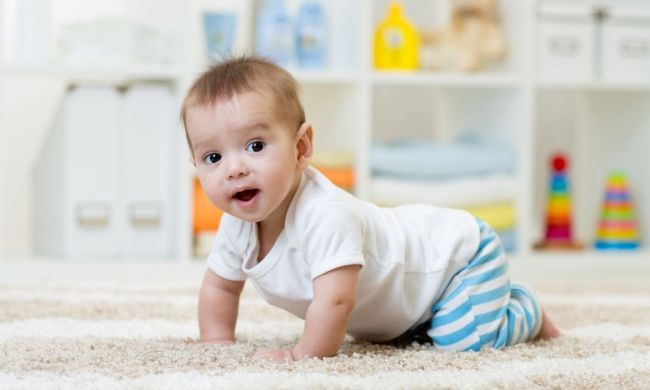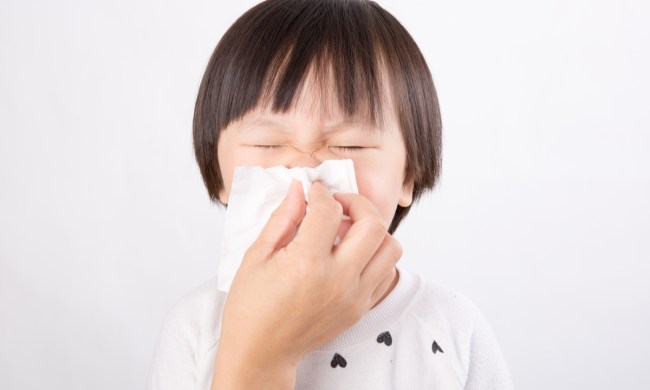Receiving blankets can do much more than swaddle newborns. New parents should always have a receiving blanket within arm’s reach whether at home or on-the-go for burping, swaddling, and changing, for starters. This versatility makes them a popular baby-shower gift. They’re smaller than swaddle blankets at 30 inches by 30 inches compared to 40 inches by 40 inches, respectively, but they can do anything a swaddle blanket can — and more.
What receiving blankets do for your newborn
Protect your baby from itchy fabrics, germs, and fragrances
During your baby’s first year or so, everyone — and we mean everyone —will want to hold your new arrival. Visiting grandparents, uncles, aunts, and friends will want to squeeze in as much baby time as they can. Babies’ skin is very sensitive to many things, including synthetic fabrics and scents. This means even a harmless lotion or perfume has the potential to irritate baby’s skin if they come in contact with another person.

This is where receiving blankets come in. You can place one on the person’s shoulder before they hold your baby to keep fabrics and unfamiliar scents off your baby’s skin. Most receiving blankets are made of cotton or bamboo, which are gentle on the skin. Bunny Palm’s 47 by 47 inch organic bamboo blankets are a practical purchase. The bamboo fabric is hypoallergenic and come in a pack of two, so you always have a backup in case one is dirty.
Cotton and bamboo materials are breathable, don’t stain easily, and can be washed indefinitely before they start to show wear and tear. And if there’s one guaranteed thing about parenthood, it’s the never-ending pile of laundry. Good thing you’ll be armed with a stash of receiving blankets!
Keep your clothes vomit-free
Newborns’ stomachs are the size of a cherry, and as they grow, they learn to keep liquids down easily. Throughout their first few months, babies will burp after feeds and will most likely bring up liquids with it. A receiving blanket over your shoulder keeps baby-burp messes off your clothes, so you’ll have one less thing to worry about (and clean!) during the infant stage.
Later on, you can use receiving blankets to clean up mealtime messes. We know it can get as frustrating as it is fun , but let’s face it — children will throw, mash, and spray food everywhere as they learn how to feed themselves. When your child is too big for swaddling, you can use receiving blankets to quickly wipe off your child’s face and hands, high chair, and the floor during mealtime.
Shield your baby from the sun
If your baby stroller doesn’t have a built-in sun shield, a receiving blanket is just as efficient. Of course, sun-protection habits like avoiding sun at its highest should be practiced, but you can use a blanket to cover your child’s stroller in a pinch. Since a lot of receiving blankets are so lightweight, it won’t make your child feel stuffy or too warm.

Out of the stroller, you can also use the blanket to protect your child from the sun. This is useful if you’re out in the backyard soaking in some sun or at the park for a quick morning walk. The extra layer also keeps the wind and other things like dust or pollen away.
Substitute the blanket as a make-do changing pad
Most people believe a diaper-changing station or changing pad are essentials, but sometimes you can get away with just a receiving blanket. If your home is tight on space, and a diaper-changing cart complete with changing pad is too bulky, a receiving blanket on your bed or another soft surface will do.
We know it’s not ideal, but when you’re on a road trip, and there’s no public or clean-looking bathroom in sight, you can use a blanket in your car on top of a plush blanket to change your baby. This may help put your mind at ease instead of bringing your child into a less-than-pristine public rest-stop bathroom.
Stock your car and diaper bag with backup blankets
On days when you don’t get enough sleep or just have too many things on your mind, you might forget essentials like the diaper bag or diaper-changing pad at home. It happens! Don’t beat yourself up over it, but having a stash of blankets in your car or bag will come in handy. As we mentioned, receiving blankets double as a changing pad. This is helpful for quick pit stops when public bathrooms aren’t an option.

Moreover, you can use blankets as a lightweight cover in the car. In the summer months when a fleece blanket might be too warm, a breathable cotton or bamboo blanket is the ideal option. During colder months, thicker blankets like these Hudson Baby flannel blankets are more ideal. They measure at 30 by 30 inches and come in a pack of four assorted prints like gingham and stripes.
Tucking away a blanket or two in your diaper bag is also sensible. If you somehow forget the baby wipes — gasp — at home, a soft blanket can do for cleaning up baby burps and other messes.
Use the blanket as a play pad
Tummy time is important for building neck muscles, and you can use a receiving blanket as a protective layer between your baby and a soft surface like your bed. The hypoallergenic, soft materials will keep baby’s skin itch-free. It’ll also keep unwanted germs and other materials off your child — we all know how much babies love to eat and gnaw at everything they touch, including floors and blankets.
A receiving blanket is an essential part of your pre-baby supplies. So add a couple of packs onto your baby shower wish list or grab some on your own, so you can prepare for any situation. Whether it’s forgetting your changing pad at home or being caught unexpectedly in the rain, a receiving blanket has your child covered.


